Dubai is the most populous and the largest emirate in the UAE with approximately 2,502,715 people. Notably, it is the most progressive emirate among the seven emirates. Dubai is classified as an alpha city due to its strong economy. Despite being a desert, the country has managed to utilize its resources and according to the 2015 statistics, it has an annual GDP of 105.6 billion USD.
Unlike its neighboring emirates such as Abu Dhabi, the oil reserves of Dubai have been exhausted; oil contributes only 2 % of the total GDP of this emirate. Although it started as a port, Dubai has developed into a luxurious emirate that is home to the world's tallest building. Human occupation has been traced back to the emergence of anatomically modern humans from Africa some 124,000 BCE through finds at the Faya-2 site in Mleiha, Sharjah. Burial sites dating back to the Neolithic Age and the Bronze Age include the oldest known such inland site at Jebel Buhais. Known as Magan to the Sumerians, the area was home to a prosperous Bronze Age trading culture during the Umm Al Nar period which traded between the Indus Valley, Bahrain and Mesopotamia as well as Iran, Bactria and the Levant.
The ensuing Wadi Suq period and three Iron Ages saw the emergence of nomadism as well as the development of water management and irrigation systems supporting human settlement in both the coast and interior. The Islamic age of the UAE dates back to the expulsion of the Sasanians and the subsequent Battle of Dibba. The UAE' history of trade led to the emergence of Julfar, in the present-day emirate of Ras Al Khaimah, as a regional trading and maritime hub in the area.
The maritime dominance of the Persian Gulf by Emirati traders led to conflicts with European powers, including the Portuguese Empire and the British Empire. Population estimates of the country in 2000 ranged from 2.6 to nearly 3 million. It serves as the financial, transportation, and communications center of a major petroleum-producing area. Abu Dhabi also has a large port and is home to federal government ministries and embassies.
Dubai is the main trading center of the entire Gulf, has the principal port facilities of the UAE as well as its busiest airport, and has several large commercial enterprises. As impressive as economic growth has been in the UAE, the total population has increased from just around 550,000 in 1975 to close to 10 million in 2018. This growth is mainly due to the influx of foreign workers into the country, making the national population a minority. The UAE features a unique labour market system, in which residence in the UAE is conditional on stringent visa rules.
This system is a major advantage in terms of macroeconomic stability, as labour supply adjusts quickly to demand throughout economic business cycles. The UAE has developed from a juxtaposition of Bedouin tribes to one of the world's most wealthy states in only about 50 years. Between 2000 and 2018, average real gross domestic product growth was at close to 4%. It is the second largest economy in the GCC , with a nominal gross domestic product of US$414.2 billion, and a real GDP of 392.8 billion constant 2010 USD in 2018. Since its independence in 1971, the UAE's economy has grown by nearly 231 times to 1.45 trillion AED in 2013.
The non-oil trade has grown to 1.2 trillion AED, a growth by around 28 times from 1981 to 2012. Nowadays the UAE is one of the world's richest countries, with GDP per capita almost 80% higher than OECD average. Islam is the official religion and Arabic is the official language. The United Arab Emirates' oil and natural gas reserves are the world's sixth and seventh-largest, respectively. Zayed bin Sultan Al Nahyan, ruler of Abu Dhabi and the country's first president, oversaw the development of the Emirates by investing oil revenues into healthcare, education, and infrastructure.
The United Arab Emirates has the most diversified economy among the members of the Gulf Cooperation Council. In the 21st century, the country has become less reliant on oil and gas, and is economically focusing on tourism and business. The government does not levy income tax, although there is a corporate tax in place and a 5% value-added tax was established in 2018. The emirates, in 2007, seemed far from the emergence of any meaningful political life, which usually accompanies increased wealth. Huge government spending, free access to education, and to health services, as well as subsidized primary commodities, has diverted attention from politics.
Social development efforts, most particularly the nurturing of the country's citizens or "human capital," have been a priority of the UAE government since the early years of the federation. Immense resources have been applied to provide modern social and economic development infrastructure in education, health, and social welfare. Ras al-Khaimah is situated to the northern part of the UAE, bordering part of Oman's territory, the Musandam. The population of this emirate is 205,000 people, and the Emirati citizens are the largest group.
Ras al-Khaimah does not have any oil, and it has, therefore, focused on advancing its industrial sector. The primary economic areas of Khaimah include real estate, tourism, building materials, service sector, and agriculture. The most recognized types of attraction in this emirate include shopping, nature, parks, water, and amusement parks. The capital city of this emirate is also referred to as Ras al-Khaimah and it is a home to most of the citizens of Ras al-Khaimah emirate. In 2018, the oil and gas sector contributed 26% to overall GDP. While the government may still adjust the exact arrangement of the VAT, it is not likely that any new taxes will be introduced in the foreseeable future.
Additional taxes would destroy one of the UAE's main enticements for businesses to operate in the country and put a heavy burden on the economy. The UAE emits a lot of carbon dioxide per person compared to other countries. The Barakah nuclear power plant is the first on the Arabian peninsula and expected to reduce the carbon footprint of the country.
The commercial production of oil triggered rapid population growth. This resulted from improvements in diet, health care, and living standards, as well as the importation on a large scale of male foreign laborers. The 2005 statistics show that the population has gone up many folds, causing a significant demographic shift. The U.S. State Department calculates the total population as 4.32 million, 85 percent of which is made up of immigrants while natives count for remaining 15 percent. About 88 percent of the population is urban, prompting some analysts to describe the nation as a federation of city states. The remainder lives in tiny towns scattered throughout the country or in many of the desert oilfield camps.
The population has an unnatural sex ratio with 2.743 men to every woman—the highest in the world, although similar to other gulf states. Life expectancy at birth for the total population was 75.24 years in 2005. Abu Dhabi is the capital and largest of the United Arab Emirates. It is a place of enormous wealth thanks to its oil reserves, but it is also a region with an eye towards sustainable economic and environmental development. Al Ain (which in Arabic means "The Spring"), also known as the Garden City due to its greenery, is the second largest city in the Abu Dhabi Emirate and the fourth largest city in the United Arab Emirates. It is close to the Omani border, and has a unique desert/mountain landscape that make it a popular tourist attraction for locals and expats alike.
The government has accused members of Al-Islah of being foreign agents of the Muslim Brotherhood intent on overthrowing the regime, and designated the Muslim Brotherhood as a terrorist organization in 2014. Qatar's support for the Muslim Brotherhood has been a factor in efforts by the UAE, Saudi Arabia, and their regional allies to isolate that country since 2017. Efforts have been made to lessen the country's dependence on oil and shift to a more diversified economy, but, according to 2009 figures, more than 85 percent of the UAE's economy depended on exported oil and gas. Oil production was 2.8 million barrels per day in 2009, making the UAE the world's 8th highest-producing country. Its oil exports were estimated in 2007 at 2.7 million barrels per day , and its oil proven reserves were estimated in 2010 to total 97.8 billion barrels.
The UAE is also a major natural-gas producer, with production reaching 50.3 billion cubic meters (2008 est.), making it the 18th largest globally. Exports of natural gas were estimated in 2008 to be 7.6 billion cubic meters , and proven reserves of January 2010 were 6.1 trillion cubic meters . Despite its contributing almost one-third of the UAE GDP, the oil sector employs a small percentage of its workforce. Few countries in history have experienced, in less than four decades, a huge shift in income and development comparable to that of the United Arab Emirates during the last part of the twentieth century. The UAE developed a public national educational system in a thirty year period that is similar to what Western countries established in over a hundred year period. Since the early 1960s the UAE has emerged from relative obscurity in global affairs to become one of the wealthiest and most dynamic of the smaller countries of the world.
The rapid infrastructure development in virtually every corner of the country provides visual evidence of immense change. Public and private construction and modern consumption patterns are in evidence throughout the country. Dubai is the second-largest emirate in the UAE, located on the eastern coast of the Arabian Peninsula, in the southwest corner of the Arabian Gulf. It has borders with Abu Dhabi to the south, Sharjah to the northeast and the Sultanate of Oman to the southeast. The emirate was established in 1833 and is currently ruled by H.
H. Sheikh Mohammed bin Rashid Al Maktoum, who is also the vice president and prime minister of the UAE. The education system through secondary level is monitored by the Ministry of Education in all emirates except Abu Dhabi, where it falls under the authority of the Abu Dhabi Education Council. It consists of primary schools, middle schools and high schools. The public schools are government-funded and the curriculum is created to match the United Arab Emirates' development goals.
The medium of instruction in the public school is Arabic with emphasis on English as a second language. There are also many private schools which are internationally accredited. Public schools in the country are free for citizens of the UAE, while the fees for private schools vary. The UAE's monetary policy stresses stability and predictability, as the Central Bank of the UAE keeps a peg to the US Dollar and moves interest rates close to the Federal Funds Rate. This policy makes sense in the current situation of global and regional economic and geopolitical uncertainty.
In the mid- to long term, however, the peg will become less important, as the UAE transitions to a knowledge-based economy – and becomes yet more independent from the oil and gas sector . Oil wealth has transformed a territory containing mud-walled small towns and villages into commercial capitals integrated in the global economy. Abu Dhabi city is modern with broad boulevards, tall office and apartment buildings, large shopping malls, an extensive network of highways, and sprawling new suburbs. The city is known for its greenery; the former desert strip today includes numerous parks and gardens.
There are separate housing areas for nationals and immigrants, and further subdivisions for class, ethnicity, and nationality. The federation has adopted an Arab-Islamic architectural style, with arched windows, gates, and decorative stucco. Old forts, palaces, marketplaces, and mosques have been restored. Date palm trees have been planted extensively along city roadsides. The change could still make life easier for companies involved in the energy sector, however.
Many crude and fuel traders based in the region already work a Monday-to-Friday week in line with global oil markets. The emirates of Dubai and Abu Dhabi both trade their crude oil on exchanges following Monday-to-Friday hours. A number of well-known commentators have been jailed in recent years for criticizing the authorities, expressing support for dissidents or human rights, or calling for political reform. Bordering the Arabian Gulf and the Gulf of Oman, the Untied Arab Emirates has grown to be one of the most important economic centres in the Middle East. The federation of seven emirates includes the booming international metropolis, Dubai, as well as the capital city and powerhouse, Abu Dhabi.
Four Seasons is pleased to operate three modern, ultra-chic hotels and resorts in the UAE, all sure to make your stay in the country unforgettable. This is a major way of distributing oil wealth among the national population. The immigrant population also benefits to some extent, particularly in regard to medical care. Before 1960, the only settlements were small towns and villages. Towns have been transformed from mud-walled communities into commercial capitals integrated in the global economy. Because of the small population and harsh desert interior, 80 percent of the population lives in the coastal capital cities, leading social scientists to describe them as city-states.
The federal government allows individual emirates to decide the mechanisms through which ownership of land may be transferred. The judiciary is not independent, but the rule of law is generally well maintained. Nevertheless, nepotism and corruption persist, and the government generally lacks transparency. The states gained autonomy following World War II (1939–45), when the trucial states of Bahrain and Qatar declared independent statehood. The rest were formally united in 1971, with the city of Abu Dhabi serving as the capital. With a total population of 68,000 people, Umm al-Quwain is the least populous state in the UAE.
Unlike the other emirates, Quwain has not made any findings of oil products or gas. Therefore, its economy majorly relies on revenue collected from hotels, tourism, and parks. Apart from being the capital city, it is also the second largest emirate in the world with an approximate population of 1.6 million people. Abu Dhabi is classified as one of the wealthiest cities in the world with most of its revenue originating from petroleum products.
This emirate accounts for approximately two-thirds of the UAE economy. Unlike Dubai which is more Westernized, Abu Dhabi is more into cultural traditions. Abu Dhabi is also a major tourist attraction state where most people visit for cultural reasons such as to visit the Sheikh Zayed Mosque, have fun on the sandy beaches, visit the Yas Island and the famous Ferrari World Abu Dhabi. After joining forces, the UAE has grown to become a significant economic center in the Middle East. This exportation has led to a much-diversified economy making most of the seven emirates such as Dubai to transform into global hubs for retail, finance, and tourism. Annually, each emirate allocates a certain percentage of their revenue to the central budget of the UAE.
Which Is The Fourth Largest Emirate In Uae The seven emirates have developed differently over the last decade as described below. Abu Dhabi is the federal capital of the United Arab Emirates and is also the largest of the seven emirates, covering 87% of the whole country. The emirate sits on the Arabian Gulf with 700 km of coastline and is bordered by the Sultanate of Oman to the east, the Kingdom of Saudi Arabia to the south and the emirate of Dubai to the northeast. H. Sheikh Khalifa bin Zayed Al Nahyan is the ruler of Abu Dhabi and the president of the UAE.
The United Arab Emirates is a federal constitutional monarchy made up from a federation of seven hereditary tribal monarchy-styled political system called Sheikhdoms. It is governed by a Federal Supreme Council made up of the ruling Sheikhs of Abu Dhabi, Ajman, Fujairah, Sharjah, Dubai, Ras al-Khaimah and Umm al-Quwain. All responsibilities not granted to the national government are reserved to the individual emirate. A percentage of revenues from each emirate is allocated to the UAE's central budget. The United Arab Emirates uses the title Sheikh instead of Emir to refer to the rulers of individual emirates. The UAE lies between 22°30' and 26°10' north latitude and between 51° and 56°25′ east longitude.
It shares a 530-kilometre border with Saudi Arabia on the west, south, and southeast, and a 450-kilometre border with Oman on the southeast and northeast. The land border with Qatar in the Khawr al Udayd area is about nineteen kilometres in the northwest; however, it is a source of ongoing dispute. Following Britain's military departure from the UAE in 1971, and its establishment as a new state, the UAE laid claim to islands resulting in disputes with Iran that remain unresolved.
The UAE also disputes claim on other islands against the neighboring state of Qatar. The largest emirate, Abu Dhabi, accounts for 87% of the UAE's total area (67,340 square kilometres ). Abu Dhabi is the capital of the emirate of the same name, is largest of the seven emirates, and is the capital of the United Arab Emirates. The city lies on a T-shaped island jutting into the Persian Gulf from the central western coast. An estimated 1.8 million people lived there in 2006, with about an 80 percent expatriate population.
Natural hazards include frequent sand and dust storms, in some cases reducing visibility down to a few feet. Environmental issues include lack of natural freshwater resources, desertification, beach pollution from oil spills, and air pollution from burning fossil fuels for electricity production. Conservation efforts have saved the desert oryx and gazelle, as well as the endangered dugong, or sea cow, which is found along the coast.


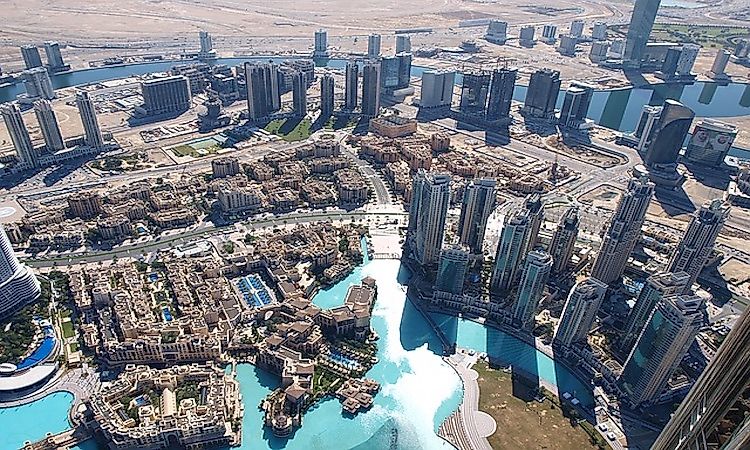






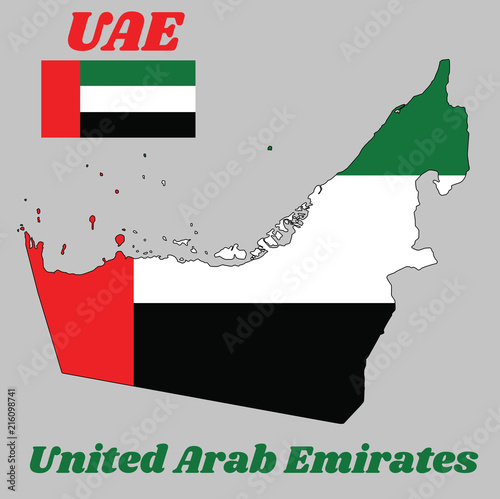


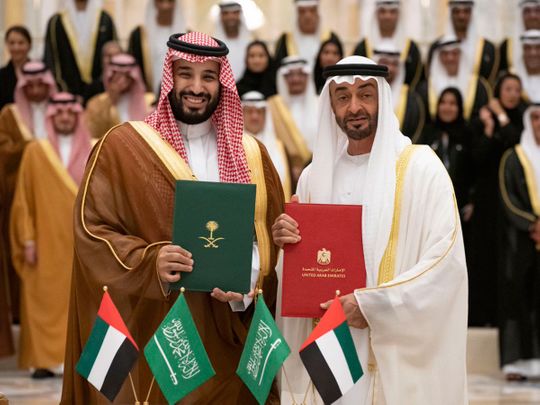


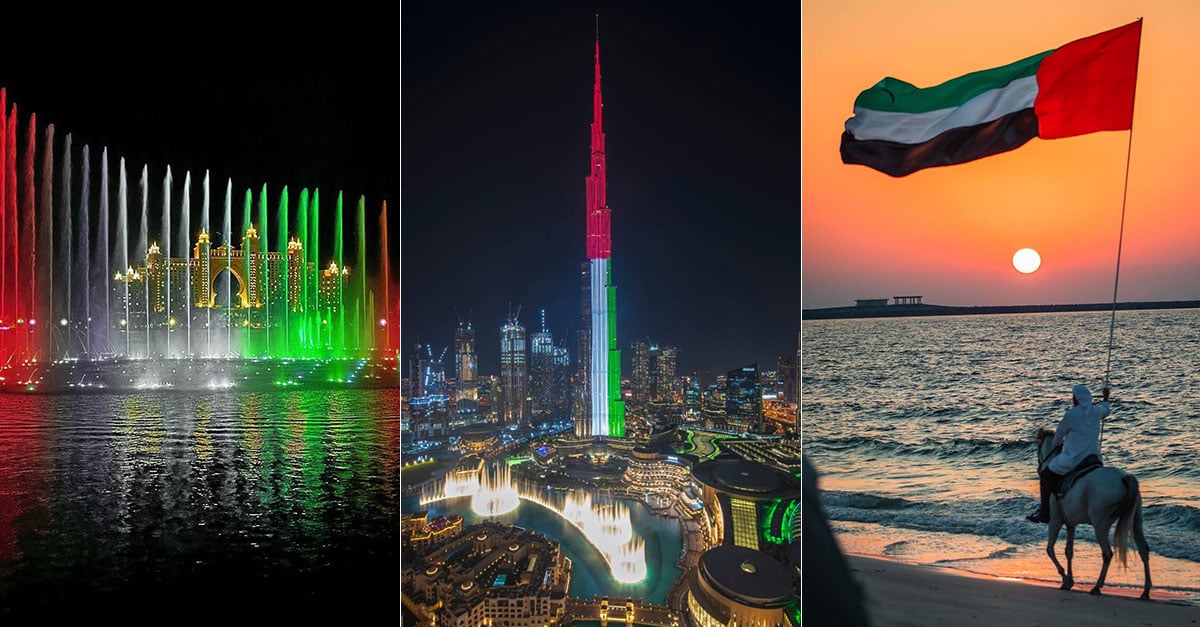





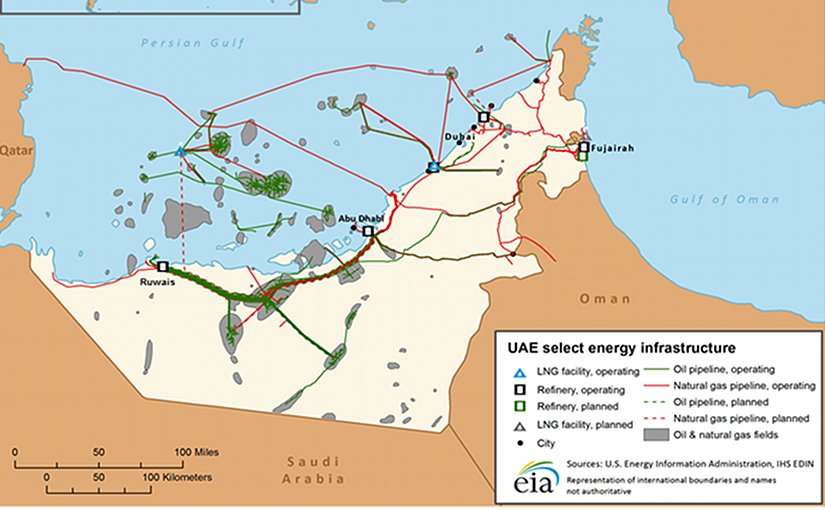
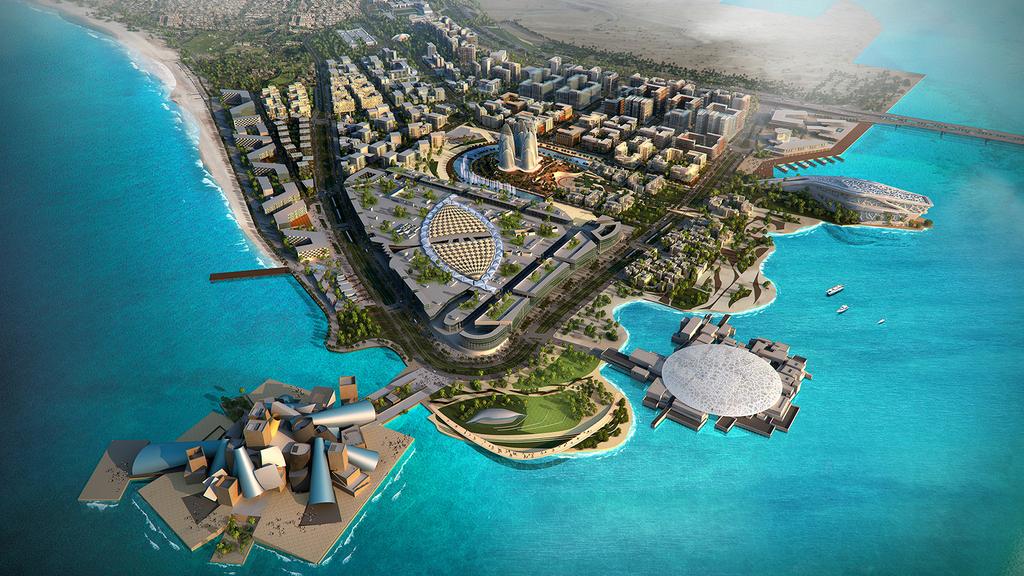



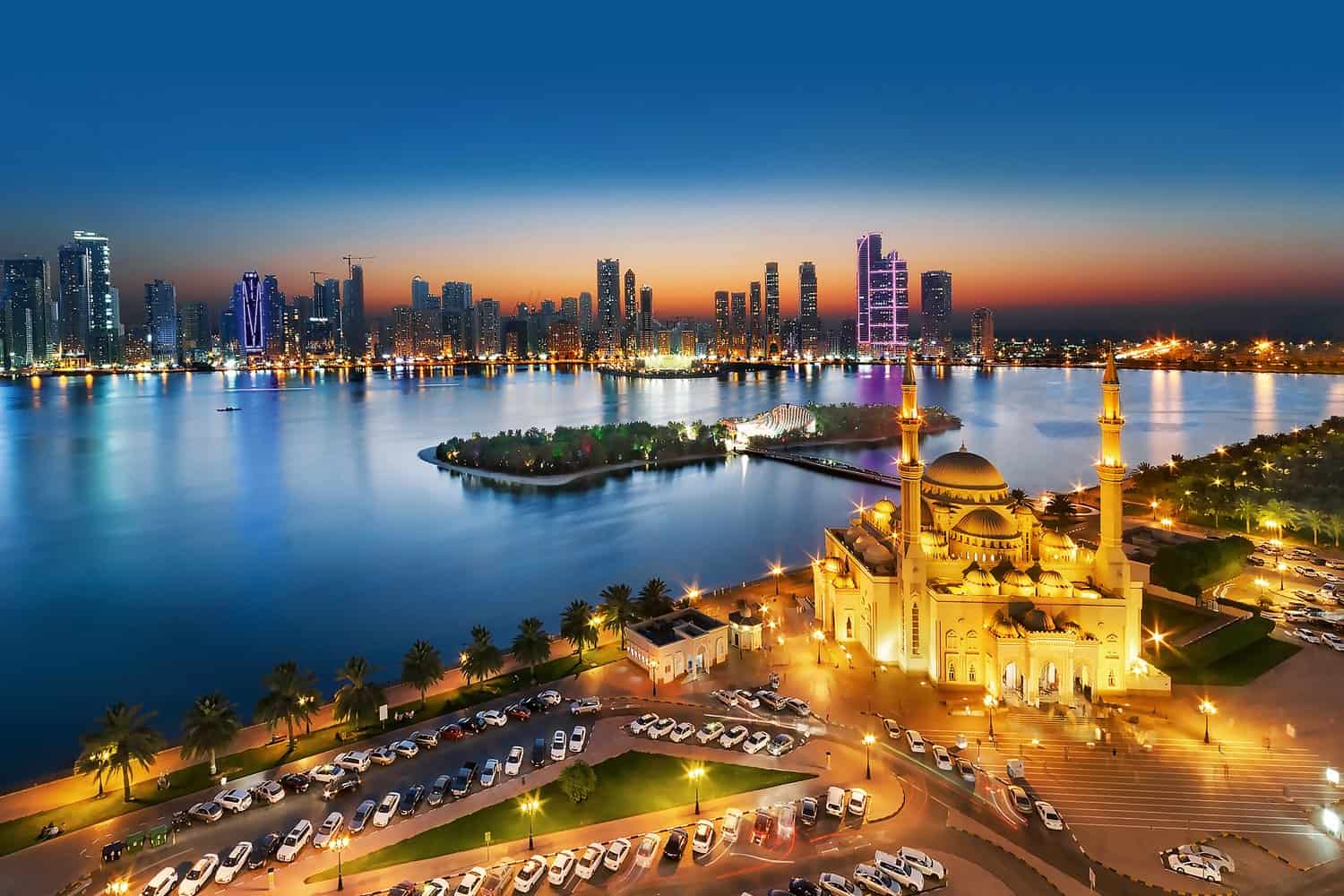


No comments:
Post a Comment
Note: Only a member of this blog may post a comment.